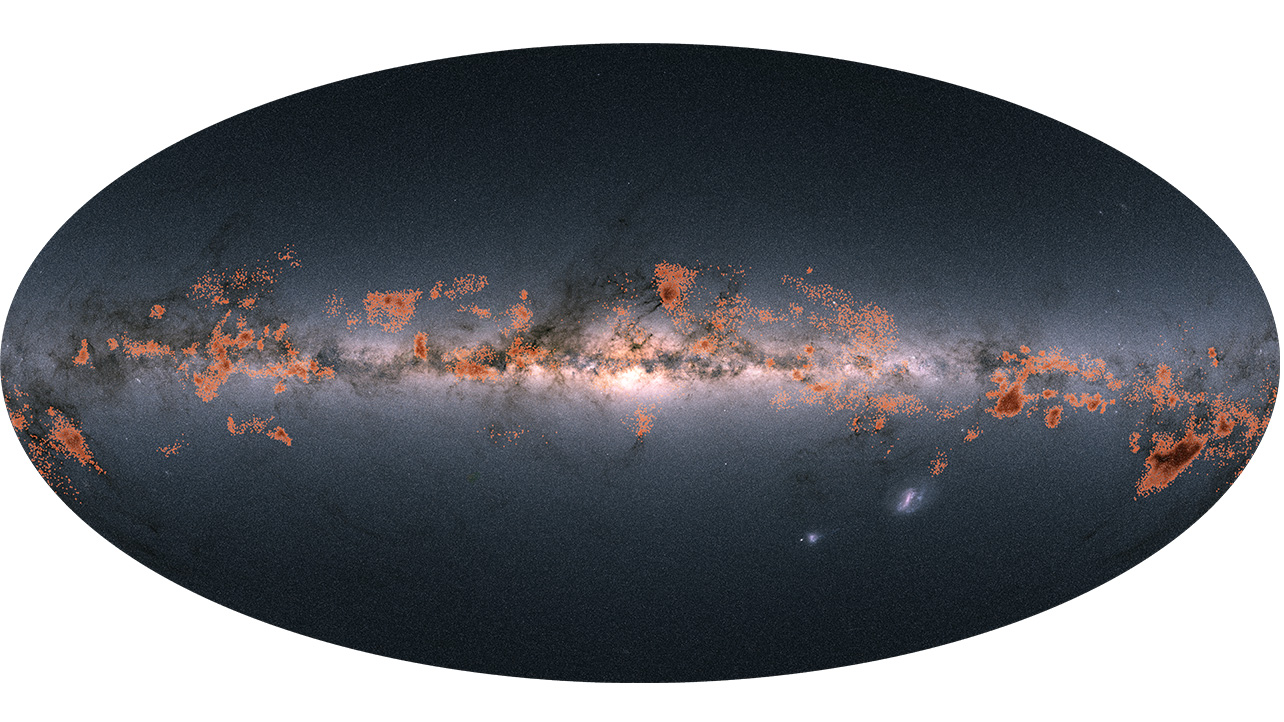Star 'Families' Stick Together in the Milky Way, Gaia Maps Reveal
They form "string-like" groups across the galaxy.
Even in star clusters, families tend to stick together, and stellar "siblings" don't leave each other's sides for billions of years.
Using data from the European Space Agency's Gaia Observatory, scientists observed star formation in a large area of space that surrounds the Milky Way and found that stellar families, or stars that formed around the same time from the same cloud, stayed together in string-like groups.
"We generally thought young stars would leave their birth sites just a few million years after they form, completely losing ties with their original family," Marina Kounkel, a researcher at Western Washington University and lead author of the study, said in a statement. "But it seems that stars can stay close to their siblings for as long as a few billion years."
Related: How to Tell Star Types Apart (Infographic)

The team analyzed the data using a machine learning algorithm and discovered around 2,000 previously unidentified star clusters that are around 3,000 light-years away from Earth. (A light-year is the distance a beam of light travels in a single Earth year, or 6 trillion miles or 9.7 trillion kilometers).
They also determined the age of hundreds of thousands of stars, which enabled them to identify which of the stars were considered "family."
"Around half of these stars are found in long, string-like configurations that mirror features present within their giant birth clouds," Kounkel said.
Get the Space.com Newsletter
Breaking space news, the latest updates on rocket launches, skywatching events and more!
Determining the age of stars is no easy feat, since stars that formed at different times but have a similar mass tend to look pretty much alike. However, in order to find these clusters of familial stars, the team looked for stars moving in a similar fashion since stars that formed within the same birth cloud tend to move in a similar way, according to the statement.
- New Stars on the Cosmic Block Are Fast, Bright and Pulsating
- Monster 'Loner' Star Causes Scientists to Rethink Supernova Explosions
- Hubble Spots Purple 'Jellyfish' Star Glowing in Abyss of Deep Space
Follow Passant Rabie on Twitter @passantrabie. Follow us on Twitter @Spacedotcom and on Facebook.
Join our Space Forums to keep talking space on the latest missions, night sky and more! And if you have a news tip, correction or comment, let us know at: community@space.com.

Passant Rabie is an award-winning journalist from Cairo, Egypt. Rabie moved to New York to pursue a master's degree in science journalism at New York University. She developed a strong passion for all things space, and guiding readers through the mysteries of the local universe. Rabie covers ongoing missions to distant planets and beyond, and breaks down recent discoveries in the world of astrophysics and the latest in ongoing space news. Prior to moving to New York, she spent years writing for independent media outlets across the Middle East and aims to produce accurate coverage of science stories within a regional context.









